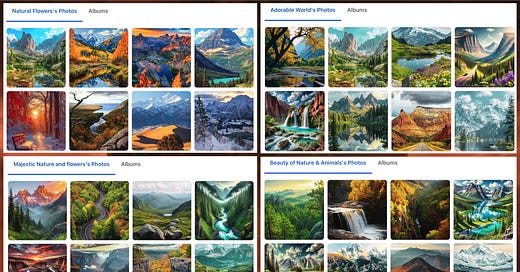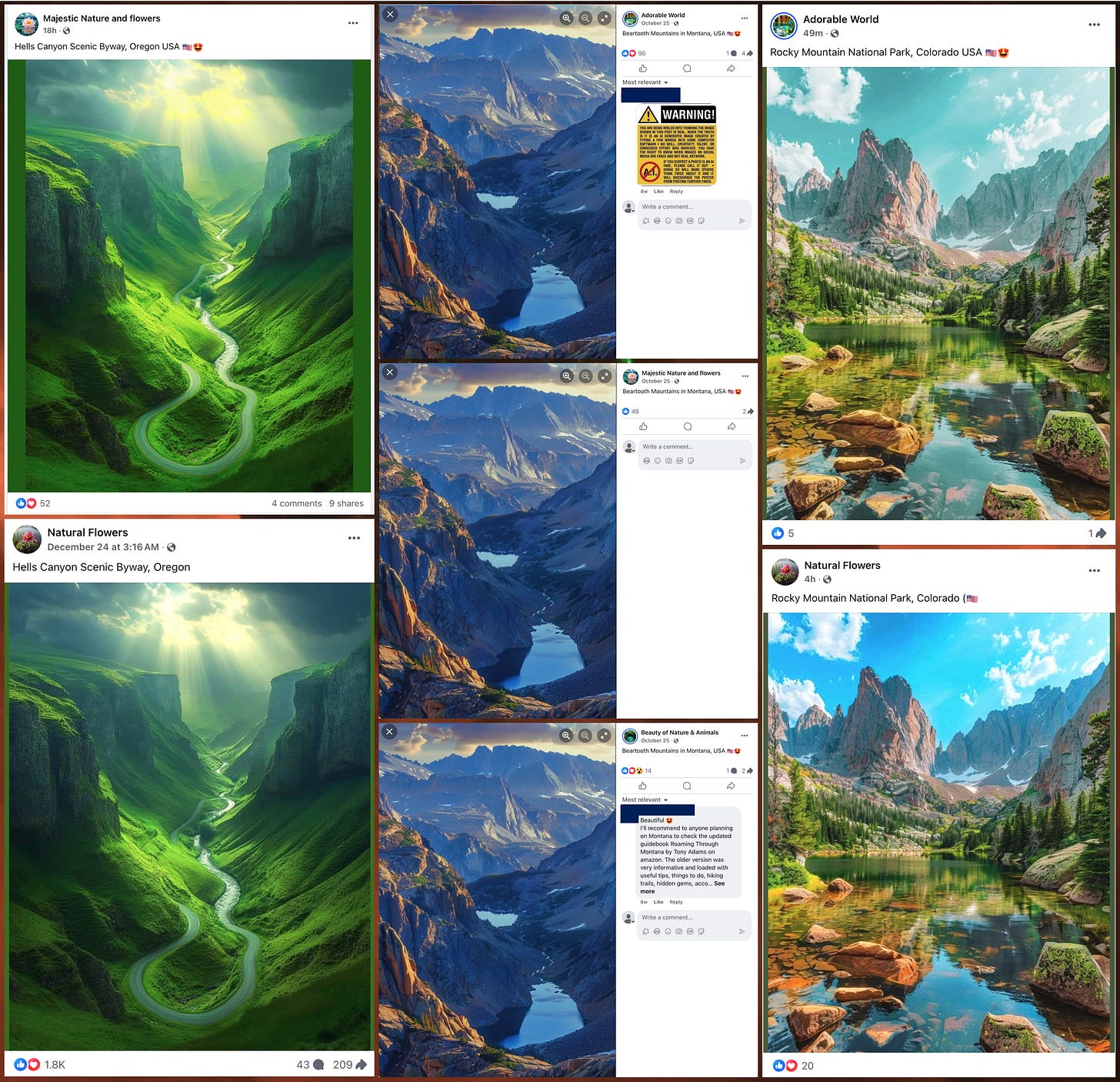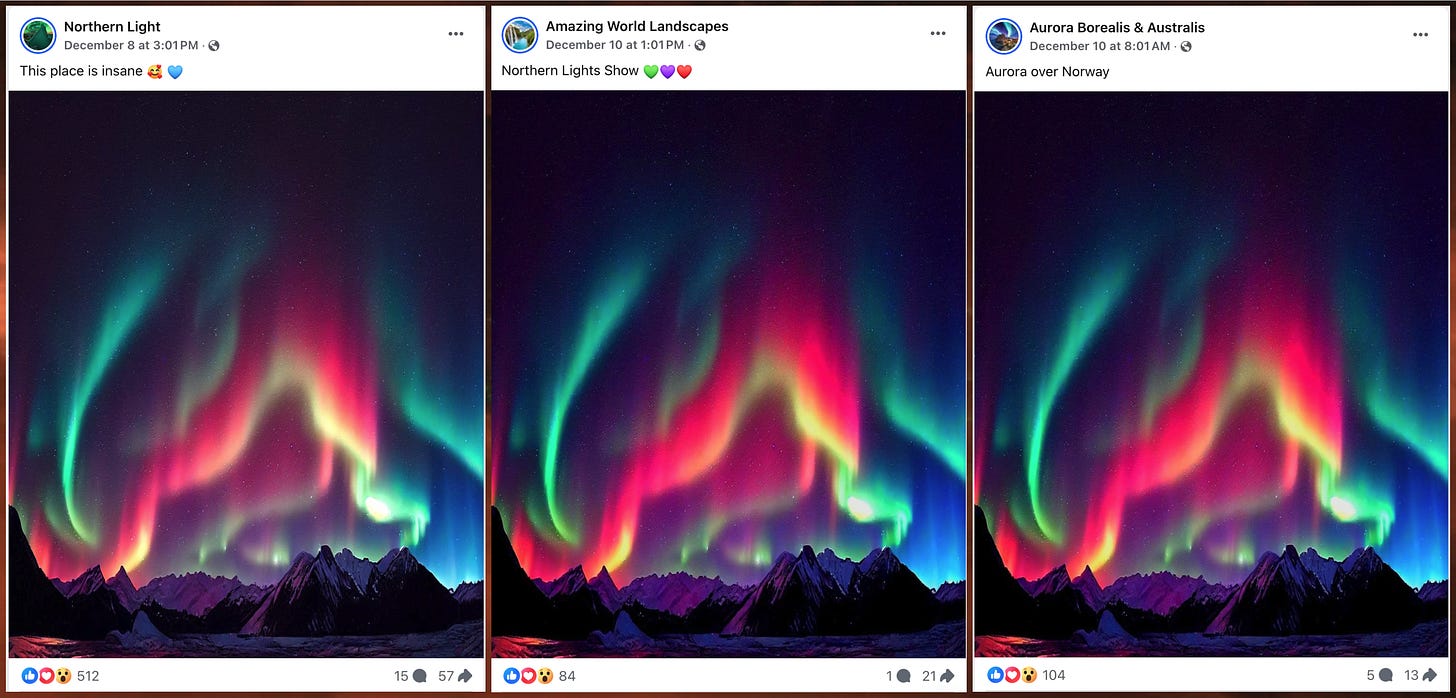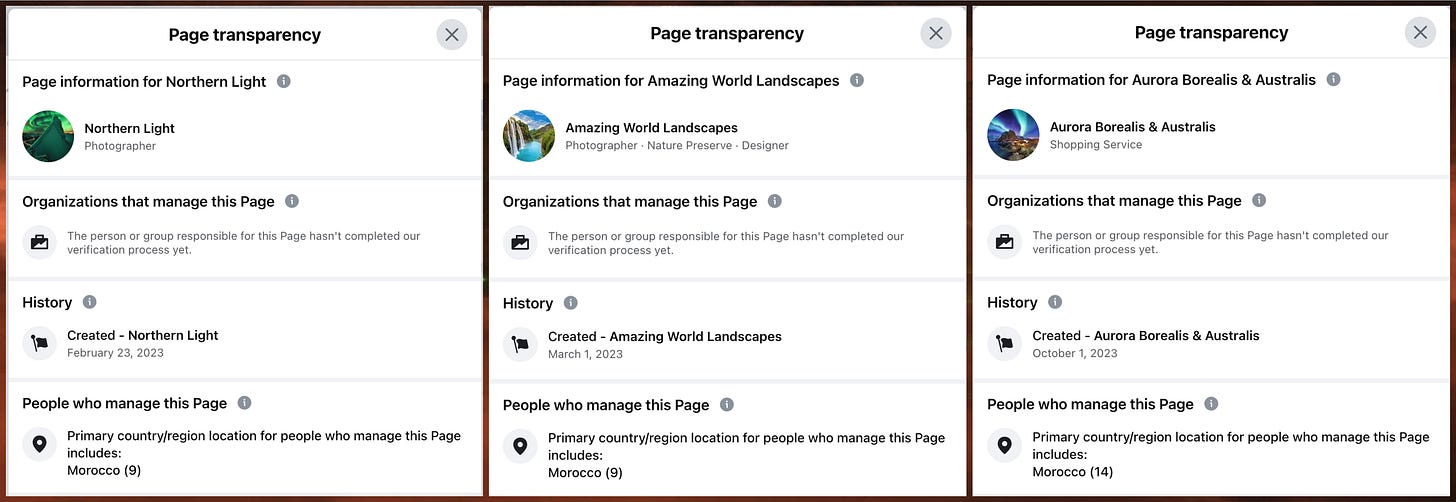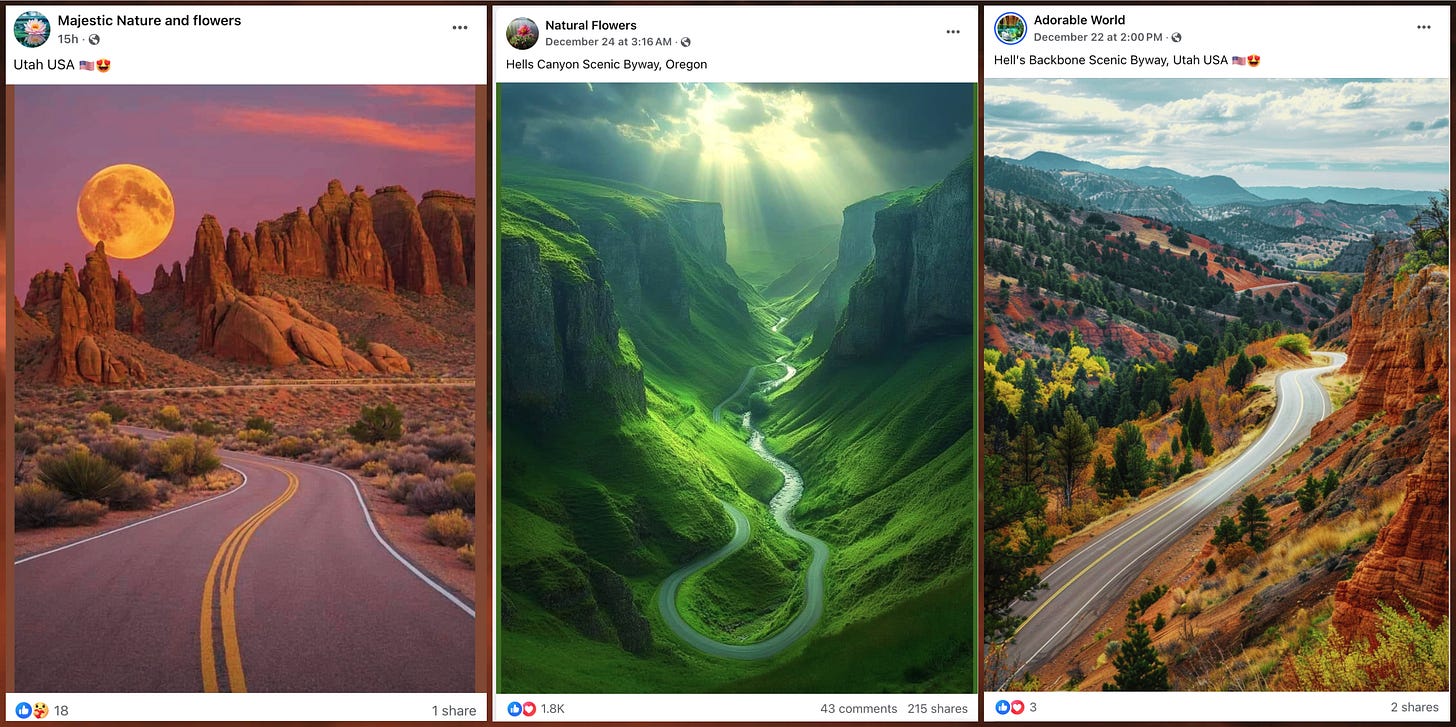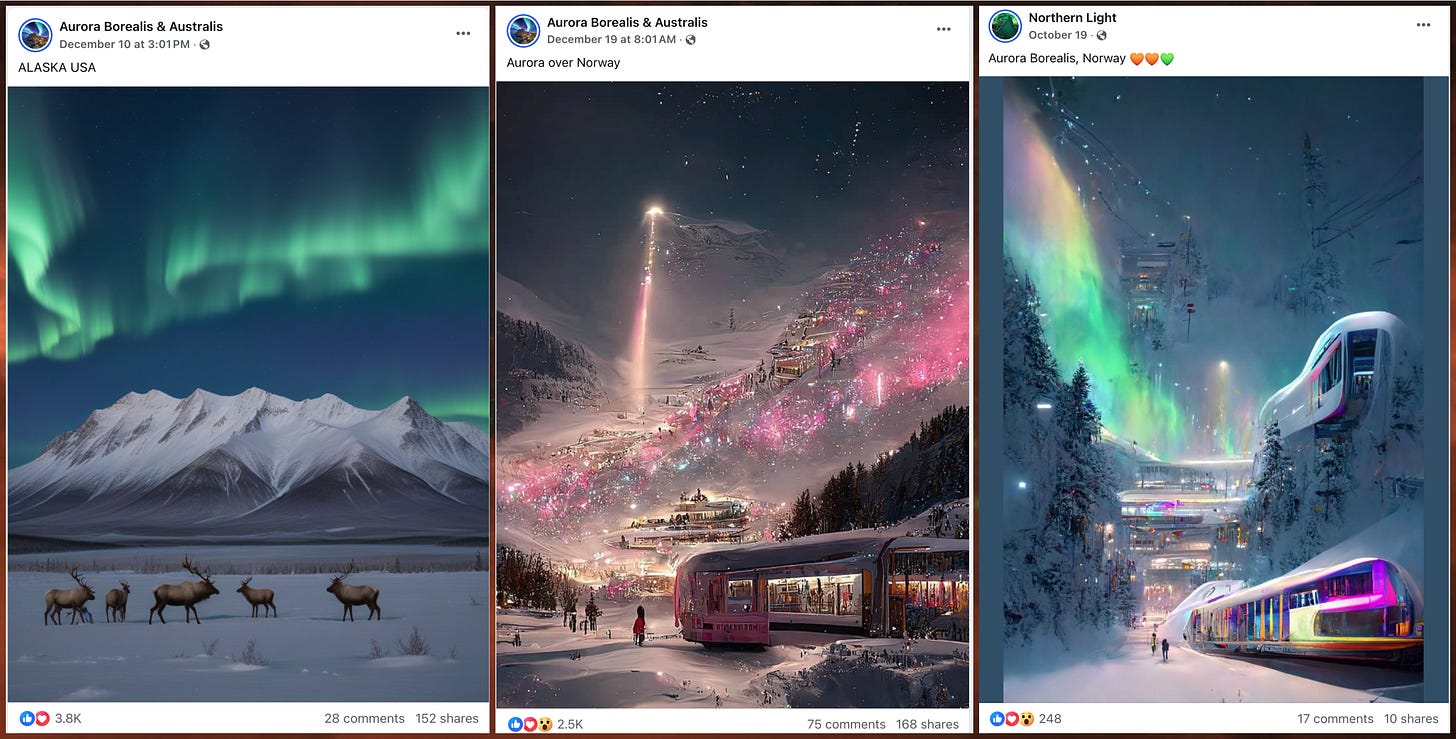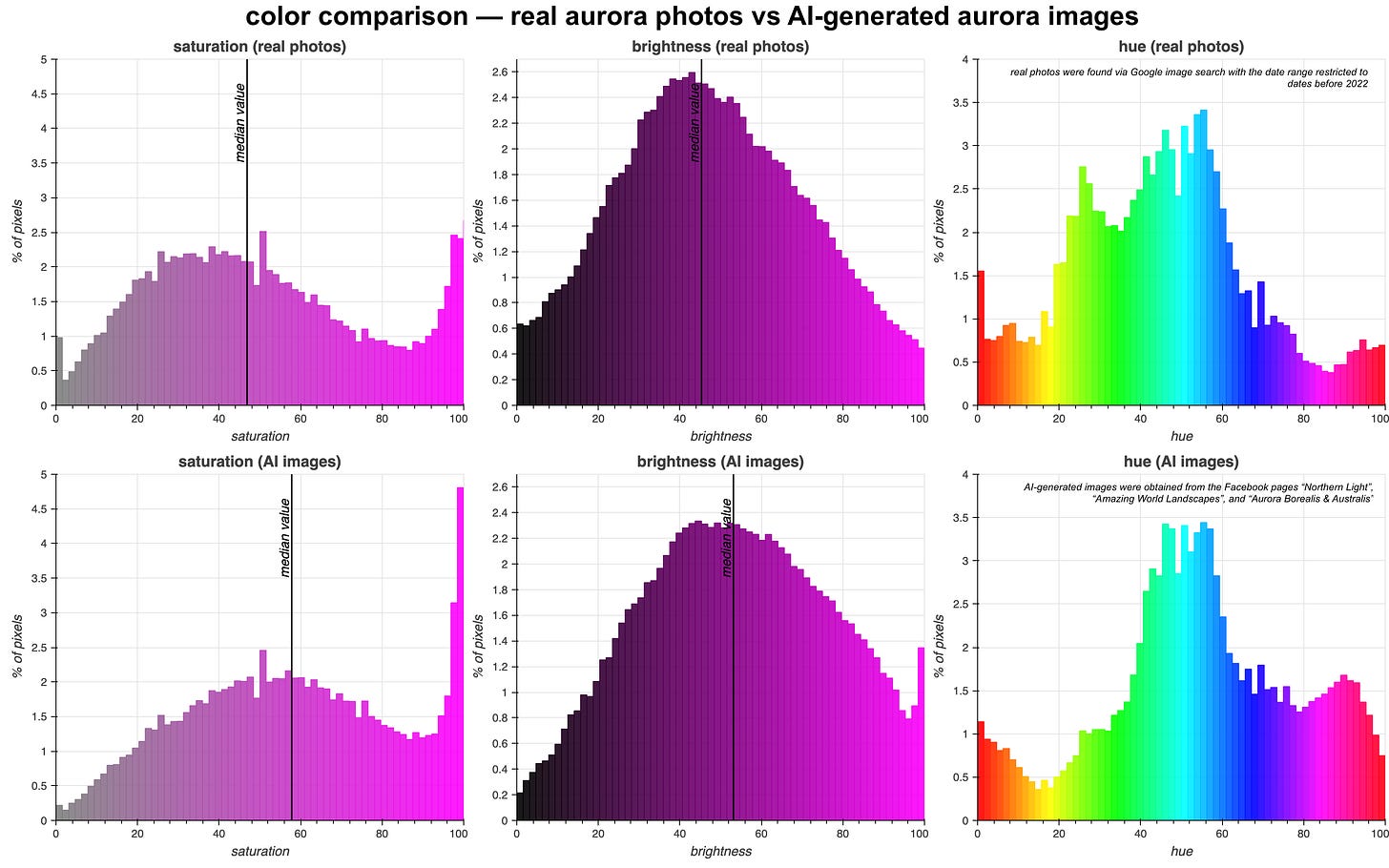AI-generated image spam, frequently referred to as “AI slop”, has been flooding Facebook for quite some time, thanks in no small part to Facebook’s own recommendation systems. Rather than being posted by average users as part of their everyday activity, these images, which sometimes rack up massive engagement, generally come from content farm pages with specific themes. These content farm pages often show signs of being repurposed, such as a history of drastic name changes, and some are demonstrably hacked. This article examines two sets of Facebook content farm accounts, one of which posts AI-generated images of U.S. national parks and other scenery, and the other of which posts artificially generated aurora images.
The first set consists of four Facebook pages, “Adorable World”, “Beauty of Nature & Animals”, “Majestic Nature and flowers”, and “Natural Flowers”. These pages post AI-generated images that allegedly depict various well-known scenic outdoor locations, mostly in the United States. In many cases, the same image is posted by more than one of the pages, frequently at roughly the same time. In what may be an attempt to evade spam detection algorithms, the duplicate images are sometimes recolored slightly. The above collage shows some examples of this; the sky and water are bluer in the “Natural Flowers” version of the “Rocky Mountain National Park, Colorado” image than in the “Adorable World” version of the same image, for example.
According to Facebook’s Page Transparency feature, three of these four pages are operated from Canada; the fourth, “Natural Flowers”, does not list a location for the page operator. Two of the four pages, “Majestic Nature and flowers” and “Natural Flowers”, have been renamed at least once. While it is impossible to be certain that any or all of these pages are operated by the same entity, the shared content lineup combined with the same alleged nation of origin for at least three of the accounts is consistent with this hypothesis.
The second set is made up of three Facebook pages that post AI-generated images of auroras, with the names “Northern Light”, “Amazing World Landscapes”, and “Aurora Borealis & Australis”. Most of the images have been posted repeatedly by all three pages; as with the artificially generated landscapes posted by the first set of accounts, the colors are sometimes tweaked slightly from copy to copy of any given image. Despite the fact that the images are synthetic, many of the posts mention locations where the “photographs” were supposedly taken.
All three of the AI-generated aurora accounts are allegedly operated from Morocco, per Facebook’s Page Transparency feature. (This was also the case with a set of Facebook pages recently covered on this blog that post AI-generated images of food.) In addition to the identical content and apparent shared nation of origin, this set of accounts has one more interesting thing in common…
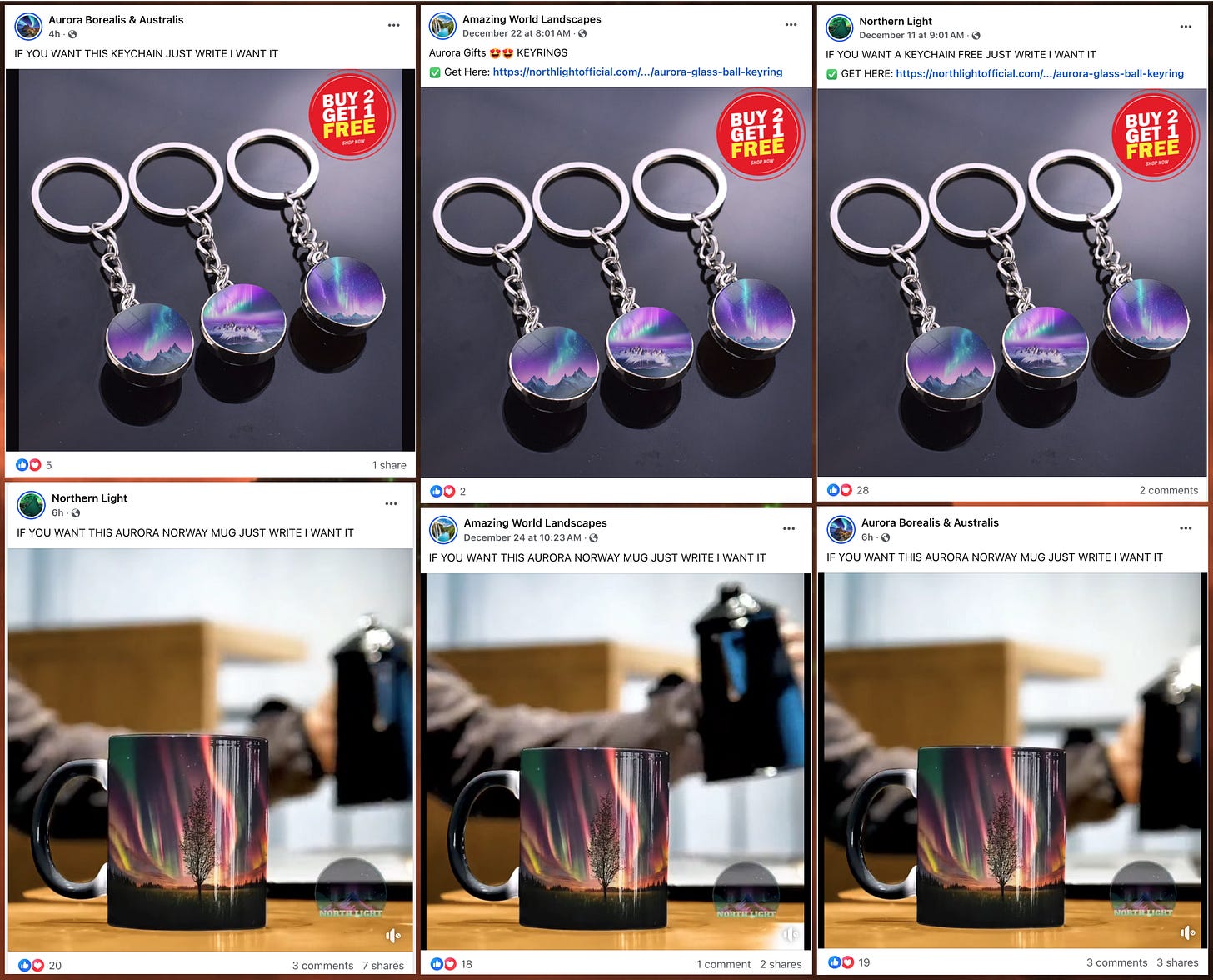
All three of the Facebook pages that post AI-generated aurora images also regularly post identical ads for products such as keychains and coffee mugs. These products are adorned with images selected from the same lineup of AI-generated auroras featured in the pages’ spammy posts. This, along with the other commonalities between the three pages, strongly indicates that they are operated by the same person or group.
Although some of the images look convincing at first glance, artifacts indicating their artificial origin are prevalent. Roads in the landscape scenes are particularly problematic, with road markings growing additional lines for no apparent reason and lanes appearing and vanishing randomly. In one particularly absurd image with the title “Hells Canyon Scenic Byway, Oregon”, a road magically transforms into a river. The AI-generated aurora images feature a variety of glitches as well, including wildlife with extra legs and surreal high-tech trains that melt into the scenery.
The colors of the auroras themselves are also off, when compared to real photographs of similar scenes taken by actual photographers. To test this, the colors in the AI-generated aurora images posted by the Facebook accounts were compared to a set of 500 authentic aurora images harvested from Google image search with the date range restricted to content indexed prior to 2022. (The date range restriction is necessary to prevent AI-generated images uploaded to stock photo sites from appearing in the set of “real” photographs.) The AI images were significantly brighter and more saturated than their genuine counterparts, and also contain more pink and less green.

